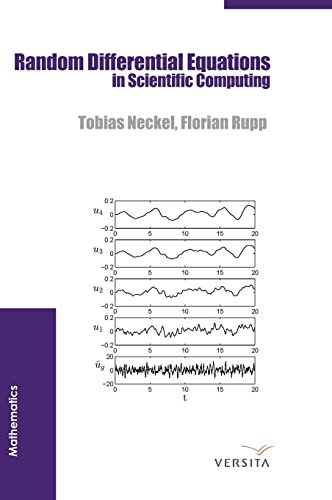
Random Differential Equations in Scientific Computing
by Tobias Neckel, Florian Rupp
Publisher: De Gruyter Open 2013
ISBN/ASIN: 8376560255
Number of pages: 650
Description:
This book is a holistic and self-contained treatment of the analysis and numerics of random differential equations from a problem-centred point of view. An interdisciplinary approach is applied by considering state-of-the-art concepts of both dynamical systems and scientific computing.
Download or read it online for free here:
Download link
(multiple PDF files)
Similar books
 The Chaos Hypertextbook
The Chaos Hypertextbookby Glenn Elert
This book is written for anyone with an interest in chaos, fractals, non-linear dynamics, or mathematics in general. It's a moderately heavy piece of work, requiring a bit of mathematical knowledge, but it is definitely not aimed at mathematicians.
(13618 views)
 Valuations and Hyperbolicity in Dynamics
Valuations and Hyperbolicity in Dynamicsby Thomas Ward - University of East Anglia
These notes describe several situations in dynamics where the notion of valuations on rings provides a simple language in which to describe and exploit hyperbolicity. This approach goes a little beyond simply providing a convenient language.
(8896 views)
 Ergodic Optimization, Zero Temperature Limits and the Max-plus Algebra
Ergodic Optimization, Zero Temperature Limits and the Max-plus Algebraby A. T. Baraviera, R. Leplaideur, A. O. Lopes - arXiv
We review some basic notions in ergodic theory and thermodynamic formalism, as well as introductory results in the context of max-plus algebra, in order to exhibit some properties of equilibrium measures when temperature goes to zero.
(7489 views)
 Discrete Dynamical Systems
Discrete Dynamical Systemsby Arild Wikan - Bookboon
This book covers important topics like stability, hyperbolicity, bifurcation theory and chaos, topics which are essential to understand the behavior of nonlinear discrete dynamical systems. The theory is illuminated by examples and exercises.
(8158 views)